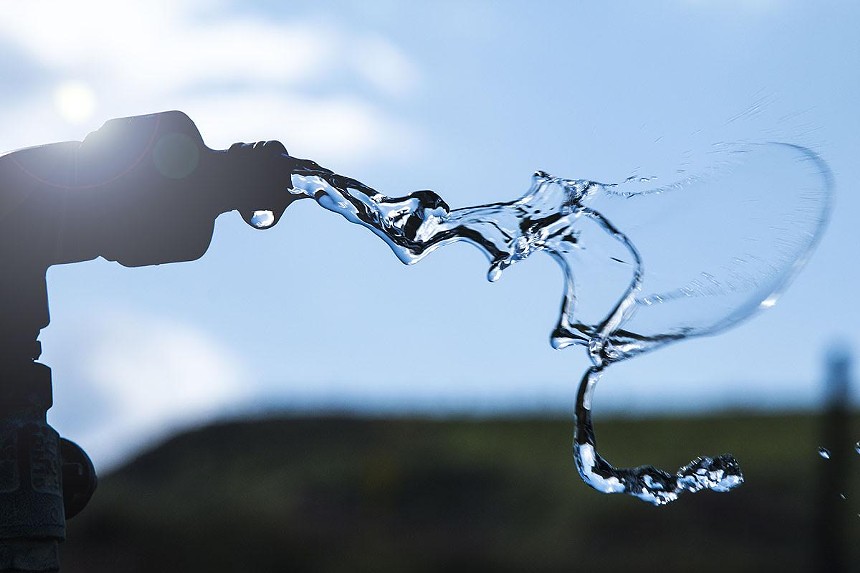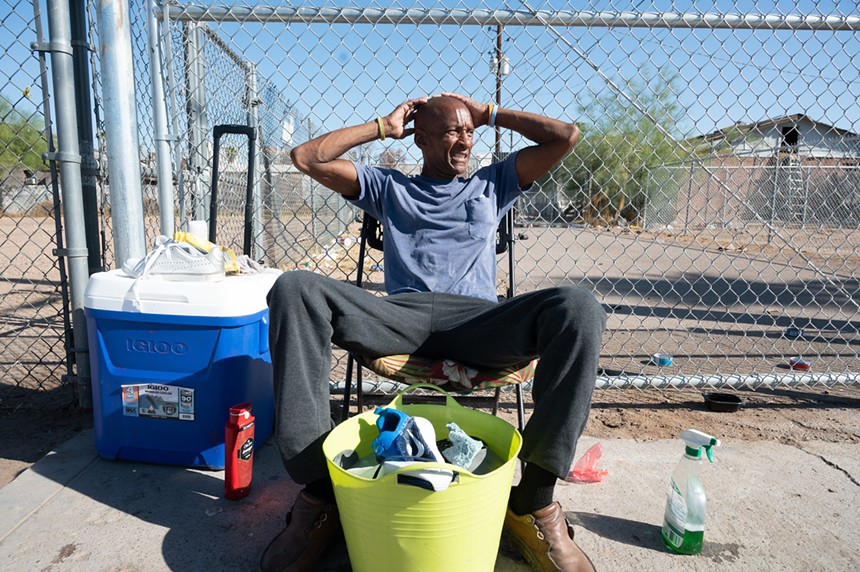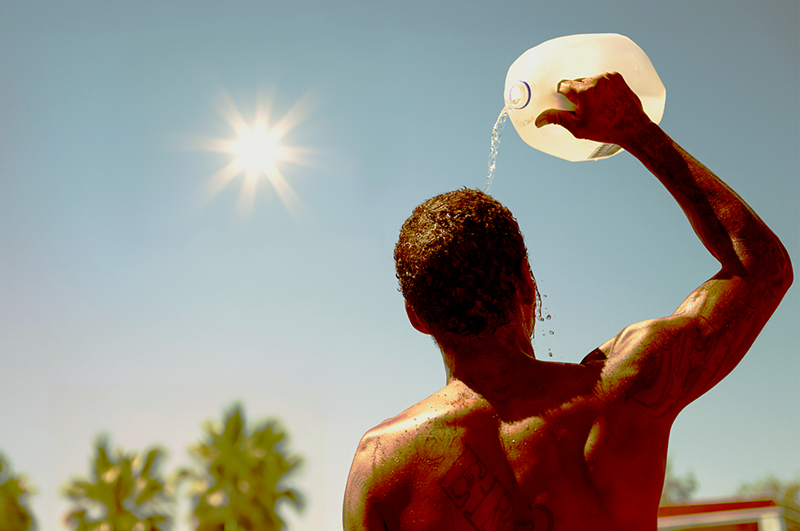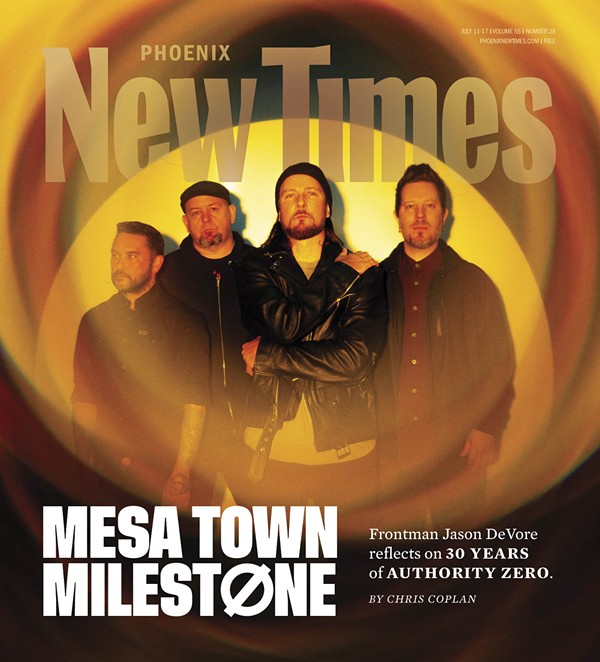Death.
The Reaper stalked the streets of the Valley during the summer of 2023, with the Maricopa County Department of Public Health counting at least 645 people who died from heat-related complications. That represented an enormous increase from the summer before, which saw 425 heat-related deaths. Last year, heat was the 10th most common cause of death in Arizona, and public health experts are deeply concerned.
They should be. Last year’s blistering summer conditions also caught many top officials off guard. A historic heat wave smothered the Valley in July, with 31 straight days of highs above 110 degrees. And Gov. Katie Hobbs did not declare a state of emergency until 12 days after the hot spell ended.
This summer is not expected to be any milder, with the National Weather Service again predicting above-normal temperatures and below-normal precipitation. “It’ll be similar to last summer,” said Katherine Berislavich, a meteorologist for the NWS. “We’re just hoping it won’t be quite to the extreme we saw last summer.”
With Arizona likely in for another grueling summer, state, city and county officials said they’re more prepared. But with evictions and homelessness on the rise and few long-term solutions being pursued, will their efforts be enough to lower the death toll?
Why so many deaths?
Last year’s record-setting July heat was so bad, Berislavich said, because the monsoon season that typically hits the Valley in July didn’t show up. “We didn’t have the clouds from rain to keep temperatures in check,” she said. “We need that in order to combat the heat.”State and city officials can’t make it rain, but they can do a better job of keeping vulnerable people out of the sun. This time last year, Phoenix began cleaning up the Zone, the city's sprawling homeless encampment that was cleared out by Nov. 2. While the tents in the area vanished, the people did not — they just went elsewhere, though many still wander the area around the Zone for its resources.
Ultimately, Maricopa County Superior Court Judge Scott Blaney ordered the city to clean up the Zone. Some experts think moving people away from a centralized location did more harm than good.
“They sent everyone out to underpasses all across the county,” said Will Humble, executive director of the nonprofit Arizona Public Health Association. “And it’s just a lot harder to get water and help to people when they’re scattered over hundreds of square miles.”
People experiencing homelessness accounted for 45% of the county’s heat-related deaths in 2023, according to the county public health department’s report. More than 75% of those who died were male, and 71% of heat-related deaths took place on a day with an excessive heat warning. Almost two-thirds of heat-related deaths occurred among people older than age 50, and while about 60% of the dead were white, African Americans were overrepresented in the deaths compared with the general population.
The problem is not just the sun, Humble said. It’s also a lack of affordable shelter.
“Quite honestly, the root cause is we have not been dealing with affordable housing and homelessness,” he said. “That’s where the bodies came from.”
Just as the world is heating up, the affordable housing crisis is only worsening. Every year, it swallows more and more people. Even the middle class is no longer safe from the looming threat of homelessness. According to an ASU study, it takes a salary of $123,752 to afford the median home price of $460,000 in the Valley. Renting isn’t all that more affordable. The median rent for a two-bedroom apartment is $1,671, which the study found is out of reach for many.
Every day, more people are at risk of a cataclysmic event that puts them on the street and into the heat. Scott Davis, a public information officer for the Maricopa County Justice Courts, said eviction filings for the first four months of the year are at a high not seen in that period since 2000. If Arizona wants to reduce heat deaths, it needs to reduce — and not just relocate — the number of people experiencing homelessness.
"With rising temperatures, it's all the more important that we address our housing issue,” said Dr. Rebecca Sunenshine, medical director for the Maricopa County Department of Public Health. “Because people that don't have shelter during extreme heat are actually at 500 times the risk of dying from heat as people who do have shelter.”

“And it’s just a lot harder to get water and help to people when they’re scattered over hundreds of square miles," said Will Humble, the executive director of the nonprofit Arizona Public Health Association
Natan Stucchi/Shutterstock.com
More cooling centers
After a flat-footed response to extreme heat last year, Arizona officials at all levels of government have adopted new measures.In March, Hobbs announced the creation of a statewide office to coordinate heat relief as part of her preparedness plan and appointed Dr. Eugene Livar to lead it as chief heat officer. On May 1, Maricopa County and various cities launched a joint effort to provide more relief through cooling centers — keeping them open longer and on weekends after many seeking respite from last summer’s heat found them closed. The Maricopa Association of Governments also refreshed its annual online map network that people can use to find cooling, respite and hydration stations across the Valley.
Phoenix, as the most populous city in the state, has opened five cooling centers for the summer, all of which will have expanded hours. Those at the Cholla, Harmon and Yucca libraries will be open Mondays through Saturdays until 10 p.m., and the Senior Opportunities West Senior Center will operate as an overnight cooling center from 6 p.m. to 5 a.m. Phoenix also has opened a new 24/7 cooling center at Burton Barr Central Library. Last year, many library cooling centers closed by 5 or 6 p.m.
The overnight centers serve a maximum of 50, according to Keyera Williams, a Phoenix public information officer. The three other libraries each have a capacity of 20. Williams said the city will advertise the cooling spaces on social media, billboards, bus shelters and in grocery stores. She added that staff have also distributed thousands of informational pamphlets and will continue performing direct outreach on the streets.
The expanded cooling centers are crucial, said Humble, who served as the director of the Arizona Department of Health Services from 2009 to 2015, and the use of existing buildings such as city libraries is a good quick fix. But Humble also thinks that’s just a Band-Aid on a larger problem.
“These are shorter-term interventions that are good,” Humble said, “but ultimately, we want to know what’s the long-term intervention? Because we’ve gotta do something about the homelessness crisis and its sister, which is the lack of affordable housing.”

Michael Felder, who lived in the downtown homeless encampment called the Zone, died from heat exposure in August 2022.
Phoenix Rescue Mission
Just a Band-Aid
So far, city and state officials haven’t come up with a good answer. Major attempts at affordable housing solutions have met the chopping block.House Bill 2570, which was known as the Arizona Starter Homes Act and passed both chambers of the Arizona legislature with bipartisan support, was vetoed by Hobbs after intense opposition from the League of Cities and Towns. Among other provisions, the bill prevented Arizona municipalities from requiring homeowners associations and setting minimum home sizes — effectively allowing the state to have a greater say in a process typically reserved for local jurisdictions. Hobbs criticized the bill as a “housing reform experiment with unclear outcomes."
Supporters of the bill, though, pointed out that by maintaining the status quo, Arizona’s affordable housing challenges will continue to spiral. State Rep. Analise Ortiz, a Phoenix Democrat, said she was “deeply saddened and disappointed in the governor’s decision” to veto the measure. Other states, she noted, “are proactively addressing housing in an urgent and deliberate manner,” while Arizona “continues to kick the can down the road.”
If HB 2570 wasn’t the answer, Ortiz would love to know what is. “I don’t know what the governor’s plan is for housing,” she said.
And any plan for housing, Humble said, is also a plan for heat mitigation. He views the league’s opposition — and any policies at the local level that disincentivize the production of affordable housing — as a significant barrier to getting more people off the street and preventing more deaths. “The League of Cities and Towns is part of this problem,” Humble said.
In a press release provided to Phoenix New Times, the league said it recognizes the "urgent need" for more affordable housing. It noted its support for two bills signed by Hobbs that speed up rezoning requests and allow properties zoned for commercial purposes to be adapted for "reuse" as residential housing. The league also said it supports two bills still in the legislature that allow for the construction of "casitas" on existing home lots and encourage the building of more duplexes, triplexes and townhomes.
New Times also asked Rachel Milne, director of Phoenix’s Office of Homeless Solutions, what she thought of the League of Cities and Towns’ opposition to HB 2570. Milne smiled while an aide said Milne couldn’t speak about affordable housing.
Expanding housing remains an intractable problem, but even the cooling centers face a long-term challenge. In March, Sunenshine told New Times the county public health agency will use funding from the American Rescue Plan Act of 2021 to increase hours for relief centers during this summer’s heat season.
But after this summer, that money runs out. Arizona summers are getting only hotter, and the county will need to find other sources of funding to cool it back down.










